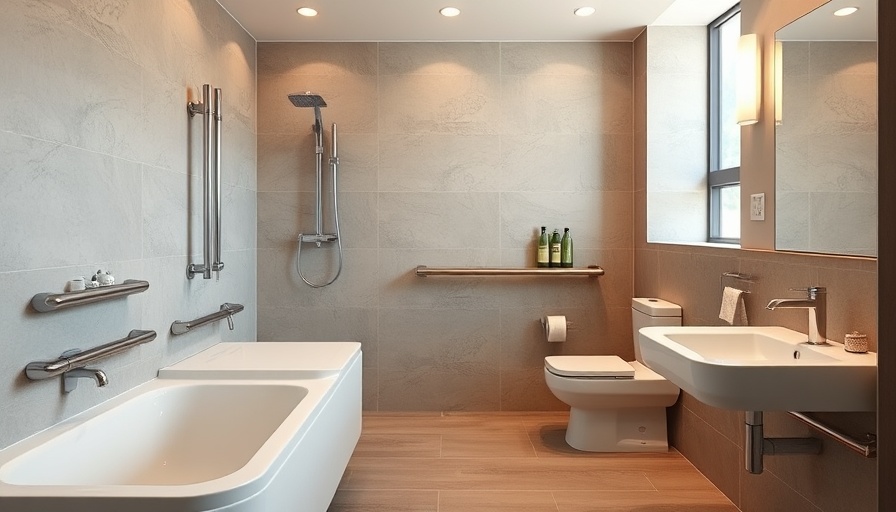
Redefining Accessibility: A Guide to Affordable Bathroom Modifications
Creating a wheelchair-accessible bathroom is more than just an upgrade; it’s a step toward enhancing the quality of life for loved ones and ensuring dignity and safety in one’s home. The good news is that it can be achieved without a complete overhaul of your finances. With thoughtful planning and inventive solutions, you can craft a bathroom that serves its purpose elegantly and affordably.
Understanding Wheelchair Users’ Needs
The first key to success in this project is comprehension. Wheelchair users have distinct requirements that must be at the forefront of your planning. Key among these is requiring a spacious environment—ideally, a minimum of 60 inches of turning radius is essential.
Moreover, features like grab bars, non-slip surfaces, and fixtures that accommodate lower heights serve to enhance safety and comfort. Prioritizing user experience means considering adequate lighting, ventilation, and aesthetics, all of which contribute to a serene, welcoming environment.
Core Design Features for Enhancing Accessibility
The layout is crucial when it comes to designing an accessible bathroom. An open, obstacle-free area will facilitate freedom of movement. Pocket doors can be a wise alternative to traditional swinging doors, providing greater ease of access, especially in tight spaces. Think about installing wall-mounted sinks that allow wheelchair users to roll underneath, ensuring comfort and independence.
The shower is a central feature that warrants special attention. A roll-in shower is a fantastic option, pairing safety with functionality. Built-in seating and grab bars offer extra support, while a curbless design eliminates tripping hazards—benefiting not just wheelchair users but all individuals who frequent the space.
Cost-Effective Alternatives to Professional Services
One doesn’t have to feel daunted by the idea of a major renovation. Simple modifications can yield significant results without breaking the bank. For instance, consider adding grip tape or textured tiles in wet areas to minimize slipping. Such solutions are inexpensive, incredibly effective, and can be tackled over a weekend.
DIY projects can elevate your bathroom’s accessibility to new heights. Installing grab bars or adjusting fixtures is likely well within the skillset of most homeowners. Kits available at local hardware stores come equipped with instructions to make these upgrades straightforward and accessible.
Selecting the Best Materials and Fixtures
To ensure durability and ease of maintenance, prioritize non-porous materials that withstand moisture, such as vinyl flooring or ceramic tiles. These surfaces not only elevate the aesthetic of your space but significantly reduce upkeep requirements.
Also, water-saving fixtures designed with accessibility in mind are a smart investment. Height-adjustable showerheads and ergonomically designed faucets can cater to a variety of needs, enhancing user comfort and sustainability.
Inspirational Case Studies in Accessible Design
Examining successful transformations can provide both inspiration and guidance as you embark on your journey. Many homeowners have shared their stories of overcoming obstacles, providing ideas on navigating challenges associated with mobility issues. These real-life successes highlight the profound impact that thoughtful design decisions can have on everyday living.
Future Trends in Accessible Design
The world is gradually leaning towards inclusivity, and bathroom design is no exception. Innovations in technology, materials, and design philosophy are continually redefining what an accessible bathroom should entail. Engagement with these trends ensures that your space not only meets present needs but looks towards the future.
In conclusion, creating a wheelchair-accessible bathroom is not merely an obligation; it’s an opportunity to foster independence and dignity within one’s home. By embracing budget-friendly strategies and DIY hacks, you create a welcoming space that is both functional and visually appealing. So why wait? Start planning your bathroom transformation today and invite comfort back into your home!
 Add Row
Add Row  Add
Add 




 Add Row
Add Row  Add
Add 

Write A Comment